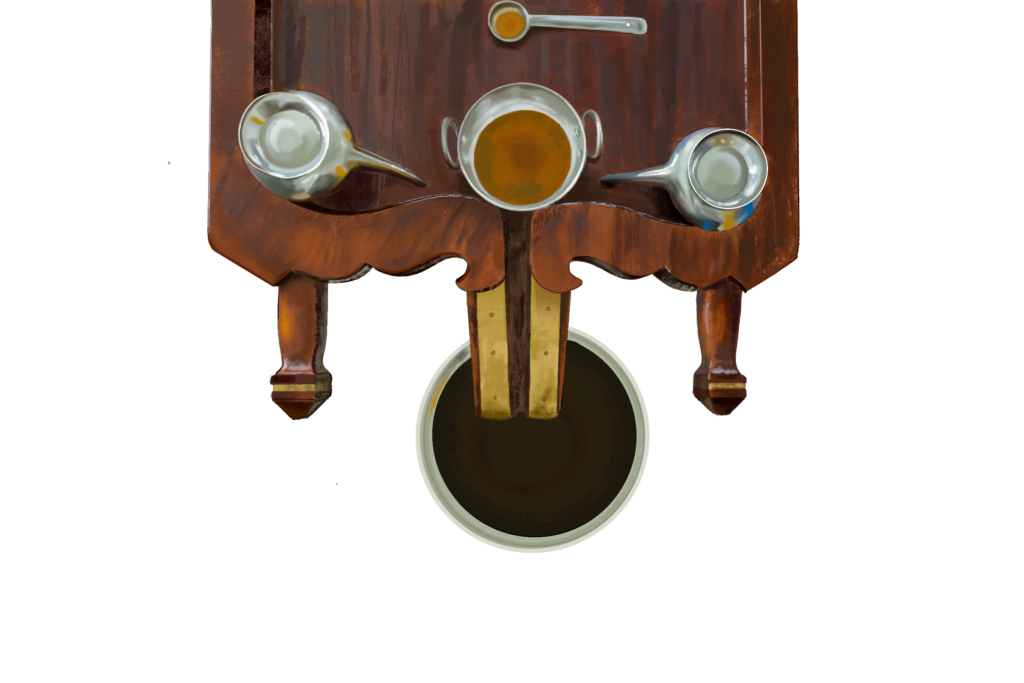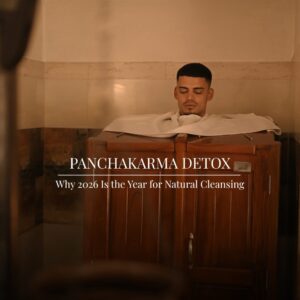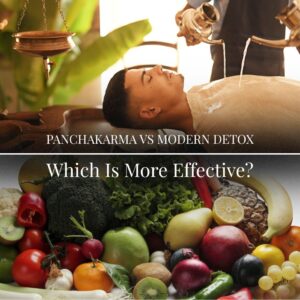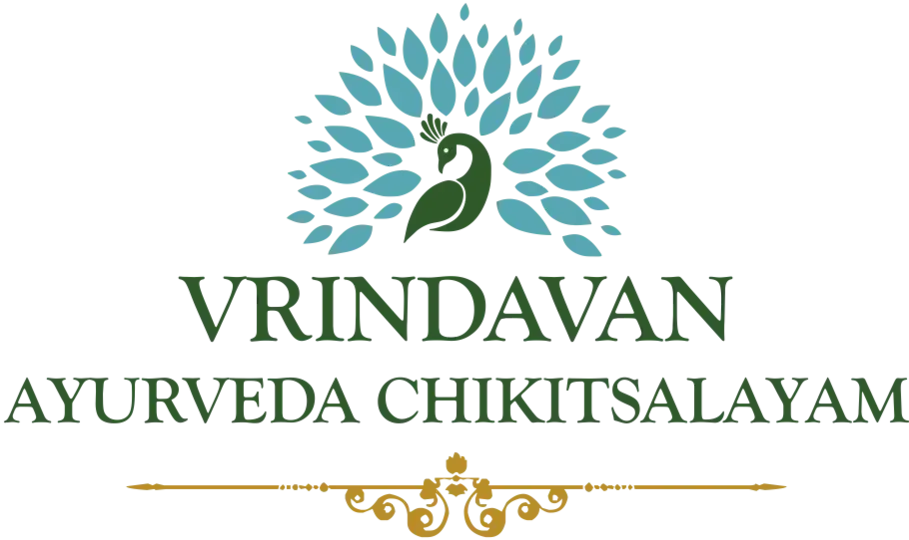Ayurvedic Treatment for Cervical Spondylosis focuses on relieving pain, stiffness, and inflammation through classical Panchakarma treatments and lifestyle modifications. It combines personalized herbal remedies, Panchakarma detox procedures, and therapeutic massages to restore balance in the body. By addressing the root cause and promoting holistic healing, Ayurveda offers a safe and effective approach to managing the problem.
Cervical Spondylosis is a condition that develops as a result of severe wear and tear to the cervical region of the neck. Also, it is possible to have chronic headaches, neck pain, stiffness, soreness, and spasms in your muscles with cervical spondylosis. Cervical spondylitis is a type of arthritis that affects the neck area.
What is Cervical Spondylosis?
Cervical Spondylosis is the medical term for age-related wear and tear affecting the cervical spine (neck), sometimes known as “Arthritis of the Neck.”
Common Symptoms of Spondylosis
People can have Cervical Spondylosis without any symptoms. If symptoms are present, they could consist of:
- Pain and Stiffness in neck
- Radiating pain to shoulders and arms
- Tingling or numbness in arms or hands
- Fatigue sleep disturbance
- Limited range of motion
- A feeling of bump or knot in your neck
- Muscle spasms
- If you move your neck, you notice a popping, clicking, or grinding sound
- Dizziness
- Headache
Causes of Cervical Spondylosis
The tissues that comprise the neck and spine gradually deteriorate with age. The causes may include:

- Dehydrated Disks: Disks in the spine serve as cushions between the vertebrae. Further, most people’s spinal discs begin to shrink and dry out around the age of 40.
- Herniated Disks: Cervical spondylosis can occur when protruding discs compress the spinal cord and nerve roots.
- Bone Spurs: When the discs that support the spine begin to degenerate, the body may produce excessive bone. Also, these bone spurs can sometimes cause damage to the spinal cord and nerve roots.
- Occupational Factor: Having a job that involves a lot of bending and twisting or heavy lifting.
- Obesity: Being overweight and not exercising can put pressure on the cervical spine and contribute to the development of cervical spondylosis.
- Stiff Ligaments: Ligaments are tissue strands that join one bone to another. Age-related stiffening of spinal ligaments can reduce neck flexibility.
Ayurvedic Treatment for Cervical Spondylosis
As per Ayurveda, Cervical Spondylosis can be co-related with Greeva Stambha. It is a type of Vata Vyadhi (mainly Vata Dosha involvement). With age, the intervertebral disc begins to degenerate, and the lubrication function of the Shleshaka Kapha deteriorates. Further, this causes compression, irritation, or swelling in Griva Pradesh (neck area), causing pain.
In modern medicine, analgesics and physiotherapy will help to some extent but they do not deal with the underlying cause of the disease.
According to Ayurveda, the major line of treatment for cervical spondylosis is to normalize the flow of Vata Dosha (Movement Force). Greeva Graham refers to stiffness and restricted movement due to vitiation of Vata dosha and accumulation of Ama (toxins). Let’s discuss more causative factors of Cervical Spondylosis –
- Aahar Rajnividhan (Dietary Mismanagement) that includes intake of dry, cold, stale, or incompatible foods. Also, excessive consumption of Vata-aggravating foods like raw vegetables, processed snacks. Eating irregularly or skipping meals that leads to accumulation of toxins in the body.
- Vihar Rajnividhan (Lifestyle Mismanagement) is about leading a sedentary lifestyle or lack of physical activity. Also, exposure to extreme cold or wind without protection.
- Mansik Rajnividhan (Mental Stress): Anyone who goes to chronic stress, anxiety, or suppressed emotions. Overthinking and mental strain aggravates Vata dosha which causes stiffness in the cervical area.
Ayurvedic treatments and Panchakarma therapies for spondylosis are highly effective and give quick results as they target both internally and locally.
Click on the image below and take a 5 minutes quiz to check the imbalance of doshas in your body.

Yoga for Cervical Spondylosis
A regular practice of certain yoga asanas (postures) and stretching exercises can help reduce pain or discomfort, increase neck muscle strength, and improve flexibility. Some beneficial asanas include:
- Makarasana (crocodile pose)
- Setu Bandhasana (bridge pose)
- Dhanurasana (Bow Pose)
- Ardha Matsyendrasana (Sitting Half-Spinal Twist): By doing this asana your upper spine, shoulders, and neck stretches, by releasing stiffness in the cervical area and enhances spinal flexibility.
- Gomukhasana (Cow Face Pose): This asana opens the shoulders, stretches the upper back, corrects the posture, and releases the trapped tension in the cervical muscles.
- Bhujangasana (Cobra Pose): Practicing this pose strengthens the spine, opens the chest, and reduces stiffness in the neck and nearby area. Also, improves posture and spinal alignment.
- Ustrasana (Camel Pose): A deep backbend that again stretches the spine and neck. Additionally, enhances blood flow to the cervical region and improves flexibility.
- Kati Chakrasana (Standing Spinal Twist): Kati Chakasana for Cervical Spondylosis gently twists the spine, relieving tension from the upper back and neck. It improves flexibility in the thoracic spine.
- Tadasana: Performing and holding this asana improves posture by aligning the spine and stretching the neck and shoulder muscles. Not to miss, that this asana brings awareness to body alignment, helping prevent strain in the cervical area.
Diet in Ayurvedic Therapy for Cervical Spondylosis
- Include a variety of antioxidant-rich, healthful foods in your diet, such as fruits and green vegetables.
- Eat foods packed with omega-3 fatty acids, like almonds, salmon, and flax seeds.
- Limit fat (especially saturated fat from animal sources), cholesterol, sugar, and salt.
- Cut back on fried foods, processed foods, and other items high in artificial additives and preservatives.
- Drink eight to ten glasses of water a day to stay hydrated.
Ayurvedic Treatment for Cervical Pain at Vrindavan Chikitsalayam
Our Ayurveda experts investigate the underlying cause of Cervical Spondylosis and treat it from the root. The treatment is carried out under the supervision of Ashtavaidyan, who has proficiency in the eight branches of Ayurveda described in the classical texts. Also,they are regarded to be Kerala’s best Ayurvedic doctors and follow the same treatment regimen as Vaidyaratnam, Kerala.
Additionally, VVAC is a leading Ayurvedic treatment institute situated in Himachal Pradesh , just minutes away from Chandigarh. It was founded by Vaidyaratnam, Kerela, which has been renowned for its Ayurvedic specialists for more than decades. VVAC practitioners follow a therapeutic approach that blends conventional medicine with an emphasis on the body’s natural ability to heal.
This Hospital is located in the foothills of the Lesser Himalayas and is spread out over 25 acres of beautiful green hill. Also, the relaxing peaceful atmosphere of the hospital is an ideal environment for the therapeutic techniques of Ayurveda.
At VVAC, your healthcare providers prescribe medications and Panchakarma therapies together with appropriate dietary regimens and yoga to treat cervical spondylosis holistically and maximize the effectiveness of treatment.
Finally, to achieve quick and long-lasting healing, experts use time-tested therapeutic procedures along with the best Ayurvedic treatments for Cervical Spondylolysis.
Panchakarma for Cervical Spondylosis at Vrindavan Chikitsalayam
Ayurvedic treatment of Cervical Spondylosis includes several effective therapies. Depending on the patient’s specific condition and symptoms, there may be changes to the optimal therapy or combination of therapies. Some of the major therapeutic procedures include:
- Greevavasti: The word ‘Greeva’ means neck and ‘Basti’ means retaining something inside. It is an Ayurvedic hot oil therapy for neck region. In Greeva Basti, herbal oils are poured and retained for a fixed duration of time in a compartment or a cabin constructed over the neck. Also, Greeva Basti increases active blood circulation around the neck and enhances flexibility to promote the smooth movement of the neck.
- Ela kizhi (Patrapotali Swedam): Elakizhi is a massage technique that uses warm herbal poultices infused with medicinal leaves. Further, this treatment aids in reducing the symptoms of cervical discomfort, stiffness, and inflammation.
- Pizhichil: During this treatment, warm medicated oil is applied to the body and massaged simultaneously. In cervical spondylosis, it helps in relieving pain and improving joint mobility.
- Sarvanga Dhara: In this therapy, warm medicinal oil is poured over the entire body, including the shoulders and neck. It improves joint mobility, nourishes the muscles, and reduces pain and inflammation.
- Snehana (Oleation therapy) and Swedana (fomentation therapy): External application of medicated oil followed by steam relieves muscle spasms around the neck and improves the joint’s flexibility.
- Kashaya Dhara: At Vaidyaratnam Vrindavan Ayurveda Chikitsalayam, expert therapists pour warm medicated decoction over the body to reduce pain and inflammation.
- Dhanyamla Dhara: Similar to Kashaya Dhara, Dhanyamla Dhara includes the pouring of fermented medicated liquid that improves circulation and reduces swelling.
- Churna Pinda Sweda (Dry Herbal Potli): Warm herbal powders are packed in a cloth in a potli which is applied to the neck directly to reduce stiffness.
- Valuka Swedan (Sand Therapy) and Nadi Swedan (steam tube therapy) are localised therapies that uses either sand or steam to open up the blocked channels in the cervical area.
- Nasya Karma: VVAC’s well-trained and experienced therapists from Kerala administer medicated oils instilled into the nostrils that lubricates cervical nerves till shoulders. Followed by Shirodhara (continous stream of medicated oils on the forehead) and Shirovasti (retention of warm oil on the head).
Vaidyaratnam Classical Medicines for Ayurvedic Treatment for Cervical Spondylosis
For enhanced and effective ayurvedic treatment for Cervical Spondylosis, there are several ayurvedic medicines from Vaidyaratnam.
- Akshardham Kashayam: It is a Vata-pacifying medicine from Vaidyaratnam that reduces stiffness and inflammation.
- Triphala Guggulu: Known for its detoxifying properties, Triphala Guggulu supports joint health and relieves ama.
- Rasnadi Kashayam: Useful for inflammatory conditions involving joints and neck.
- Bala / Balamoola Kashayam: Strengthens nerves and improves mobility.
Natural Herbs for Cervical Spondylosis
- Guggulu (Commiphora mukul): Guggulu is the most commonly prescribed herb for the treatment of arthritis. Additionally, the Snigdha and Ushna properties of Guggulu balance the Vata dosha resulting in relief from pain and inflammation.
- Ashwagandha (Withania somnifera): Ashwagandha promotes health by strengthening muscles and ligaments. Also, Ashwagandha is beneficial for all types of Dhatukashya (deficiency of body tissues) as it has Rasayana (immuno-modulator) and Brahmana (nourishes bone and muscle) properties.
- Shallaki (Boswellia serrata): Shallaki, is an herb with anti-inflammatory properties that may help reduce inflammation in the joints and prevent cartilage breakdown. Shallaki is an effective remedy to treat joint discomfort related to cervical spondylosis.
- Shunthi (Zingiber officinale): Shunthi is a powerful herb with anti-inflammatory and analgesic properties that can help relieve the symptoms of cervical spondylosis. Gingerols, the main element of ginger, have been found to have anti-inflammatory and analgesic properties.
Effective Herbal and Home Remedies for Cervical Spondylosis
Cervical Spondylosis is a degenrative condition of the neck, vertebrae and discs, which is often caused due to age, poor posture, stress, and a sedentary lifestyle. As a part of an Ayurvedic treatment for cervical spondylosis, there are some natural home and herbal remedies to manage the pain and discomfort from it.
- Hot and Cold Compression: Apply hot compress for 15 minutes followed by cold compress for 5-10 minutes that improves blood circulation, eases muscle stiffness, and reduction in inflammation and numbness. Recommended dose is twice or thrice daily.
- Epsom Salt Bath: Add 1 to 2 cups of Epsom salt to warm bathwater and soak for 15 to 20 minutes which relaxes muscles and reduces inflammation because it is rich in magnesium.
- Ginger-Basil Tea: Known for its anti-inflammatory and pain-relieving properties, this tea is natural way to manage the cervical spondylosis pain.
- Golden Milk: Golden milk is nothing but warm milk with a pinch of turmeric and a little bit of ghee and black pepper which contain curcumin. The curcumin content supports joint health and boosts immunity.
- Massage with Natural Herbal Oils: Use warm mustard oil, coconut oil, olive oil, or sesame oil to massage the neck area. For enhanced and effective results, add ajwain (carom seeds), garlic, or fenugreek (methi) to these oils. Known to help with stiffness, and aggravated inflammation.
- Gentle Stretches and Yoga: Daily neck stretches improve flexibility and reduce stiffness. Avoid jerky or extreme movements. Also, avoid sleeping without support, use a cervical pillow at night. Keep your posture straight while sitting and using devices.
FAQs on Ayurvedic Treatment for Cervical Spondylosis
- What causes vertigo in people with Cervical Spondylosis?
Certain cases of cervical spondylosis may result in vertigo because of the cervical spine’s involvement as it impacts the vestibular system, which maintains balance and spatial orientation.
- What causes dizziness in people with Cervical Spondylosis?
Cervical Spondylosis patients may experience dizziness for a variety of reasons related to the cervical spine and its impact on the neurological system.
- Can Cervical Spondylosis be cured with Ayurveda?
Cervical Spondylosis generally occurs due to aging. Ayurveda can reduce the symptoms of cervical spondylosis and delay deformity. Many things can be done at home to control symptoms and prevent complications.
- Which is the best Ayurvedic treatment for Cervical Spondylosis?

Cervical Spondylosis can be treated with a variety of methods, including Panchakarma therapies, and oral medication. The most appropriate course of treatment for you depends on your unique situation as well as the severity of your symptoms.
- Does massage treat Cervical Spondylosis?
Medicated oils applied during massage therapy are an effective means of relieving neck pain and stiffness. Additionally, if you are taking light massage therapy along with Panchakarma and oral medication, it is more beneficial for you.





